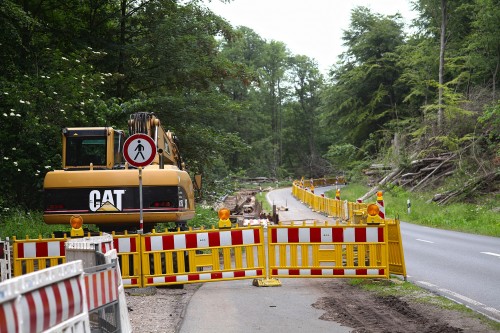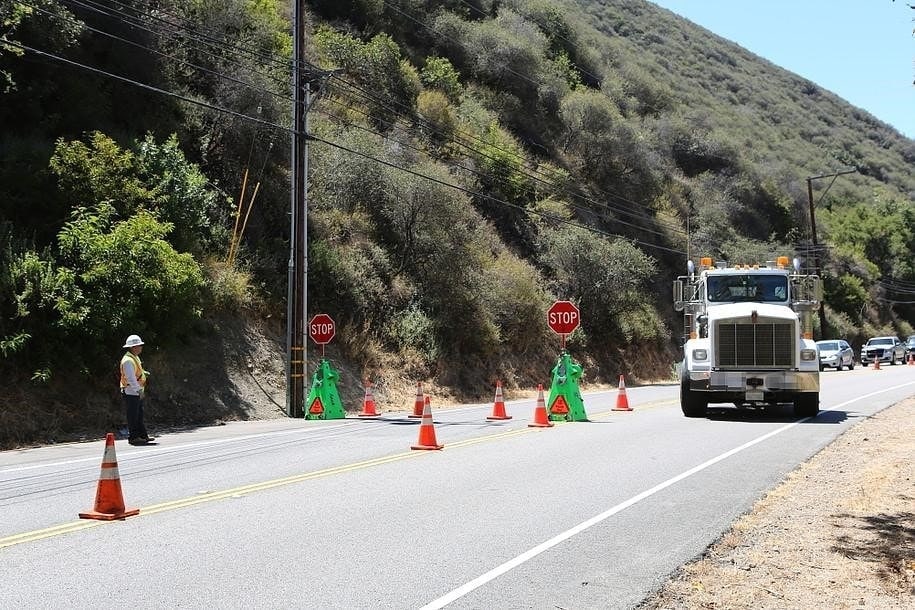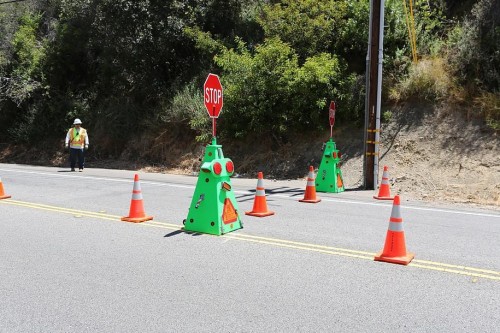
How many times have you been at a road under construction? Surely many times. Signs announcing the construction works, provisional yellow paintings… There are many ways for us to notice that there may be workers on location to improve road conditions.
In many of these situations, one or two workers must be located at either end of the work area to allow or reject the passage of vehicles, especially when a narrowing of lanes occurs and only one of them is passable. In these cases, workers must be seeing each other and coordinate with one another in order to close or open the passage to vehicles. Although they often wear reflective vests, it is still a high-risk situation, especially in low visibility conditions.
Each year, in the United States alone, more than 20,000 workers are injured in road construction work areas, according to data provided by the Workplace Safety Mobility Program and the Federal Highway Administration Area. Between 2003-2008, these injuries were caused by:
- Contact with objects or equipment (35 percent)
- Slips, trips or falls (20 percent)
- Excessive effort (15 percent)
- Transportation incidents (12 percent)
- Exposure to noxious substances or environments (5 percent)
To avoid the accidents that tend to occur in these cases, there are the so-called Automated Flagger Assistance Devices (AFADs), an automated signalling assistance system. One of the most well-known is ROSA (Remote Operated Safety Attendant), awarded in Canada in 2014 with the Minister’s Award for Excellence in Safety Innovation as well as receiving other awards.
A ROSA is a ROSA
The ROSA (Remote Operated Security Assistant) is an innovative signalling tool that has been implemented for some time and is used to control traffic and make it more fluid and safer when there are lane closures.
ROSA (Remote Operated Security Operator) weighs 82 kilos and measures 2.44 meters.
Nonetheless, this type of robot needs human supervision. Although ROSA is located in the middle of the road, operators remain in a safe and somewhat remote area, so that he can remotely manage this signalling device. In addition, from their location professionals can have a better view of the traffic and potential hazards (both for themselves and for other team members).
What is an Automated Flagger Assistance Device?
But ROSA is not the only AFAD; in this case it is a representative case of this family of robots. The Automated Flagger Assistance Device (AFAD) consists of two teams. Each of them is placed in trailers and is controlled by radio.
With these devices, a STOP signal or other front rear-reflective traffic signal is shown. If the active signal is to stop, in addition to turning on a red light and a flashing light, it will have a lowered barrier that blocks the road. If motorists see the Forward option, they will see two amber flashing lights.
As explained above, the devices are usually placed at both ends of a construction area. Messages displayed can be controlled with a type of handheld remote control using radio signals The operator is therefore located at a remote location. Many of these robots also have a warning horn (which can also be activated remotely by the operator) to warn of the intrusion of a vehicle in the workspace.
Each trailer and each device can be brought to their position separately. When they are installed, all signals and lights from the two trailers must work at the same time and in a coordinated manner.
Recognized security
These AFAD systems are considered an improvement in safety because they minimize direct exposure of workers to traffic. However, workers’ presence in work areas is still necessary because, in case of failure, they must act and control traffic.
It should also be noted that for the time being, AFADs might only be used in situations where there is only one lane per direction.
Their possibilities of application are broad, and both workers and drivers have generally positively evaluated these systems, recommending their use.








There are no comments yet